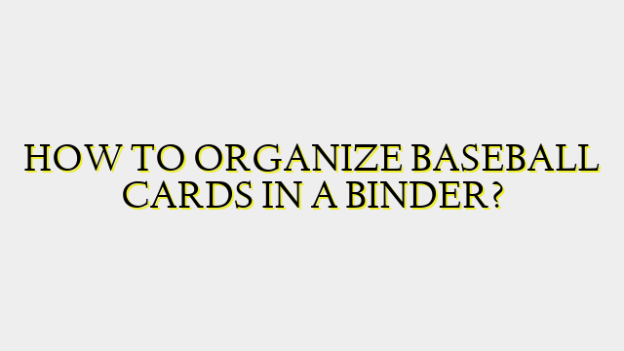The first step in organizing your baseball card collection in a binder is to get the proper supplies. You will need baseball card pages that insert into a 3-ring binder. The pages have plastic sleeves that hold individual cards. Make sure to get quality pages that are acid-free and won’t damage cards over time. You’ll also need baseball card binders designed specifically for holding the pages. A good rule of thumb is to get binders that are at least 3 inches in size as this provides enough room for card organization.
Once you have your supplies, it’s time to start sorting your baseball cards. The best way is first to sort by sport, then by team. For baseball cards this means categorizing all your baseball cards together. Then further sort them by franchise such as all New York Yankees cards together. Within each team section, further categorize alphabetically by player’s last name. This provides an easy search method to find specific players.
As you are sorting cards, look through for any particularly rare, valuable, or special “hits” such as autographs or memorabilia cards. These deserve their own special section up front for protection and easy access. Also pull out any duplicate common cards you can use for trades. If cards are in poor condition, note these and either set aside for potential trades or consider donated to a school or library.
Now it’s time to start loading the pages into your binder according to your sorting system. Place a label or tab on the binder edge for each team or section for easy reference later on. Start loading pages for each team or section alphabetically. Carefully insert cards sleeve by sleeve into the page pockets, making sure they fit smoothly without bending. Pay extra attention loading particularly valuable cards to avoid damage.
Periodically divide team or player sections with additional blank pages for future growth. For example, leave some space after all current Yankees cards in case you get additional ones to add later. This future-proofs your organization so sections can expand without rearranging too much.
Once all pages are loaded into the binder according to your sorting system, don’t forget a table of contents page up front. List out each section or team label along with the page number ranges they can be found on. This provides a quick lookup reference to find specific cards when needed.
Lastly, store your binder carefully on a bookshelf vertically or horizontally lying flat. Avoid direct sunlight, extreme temperatures, or moisture which can damage cards over time. Consider adding a cover or slipcase for protection. Now your organized card collection is easily viewable, accessible, and secure in your baseball card binder for years to enjoy! Regular maintenance like updating inserts and replacing worn pages keeps the system running smoothly. With these tips, you’ll be well on your way to organizing an impressive baseball card collection efficiently and enjoyably.

